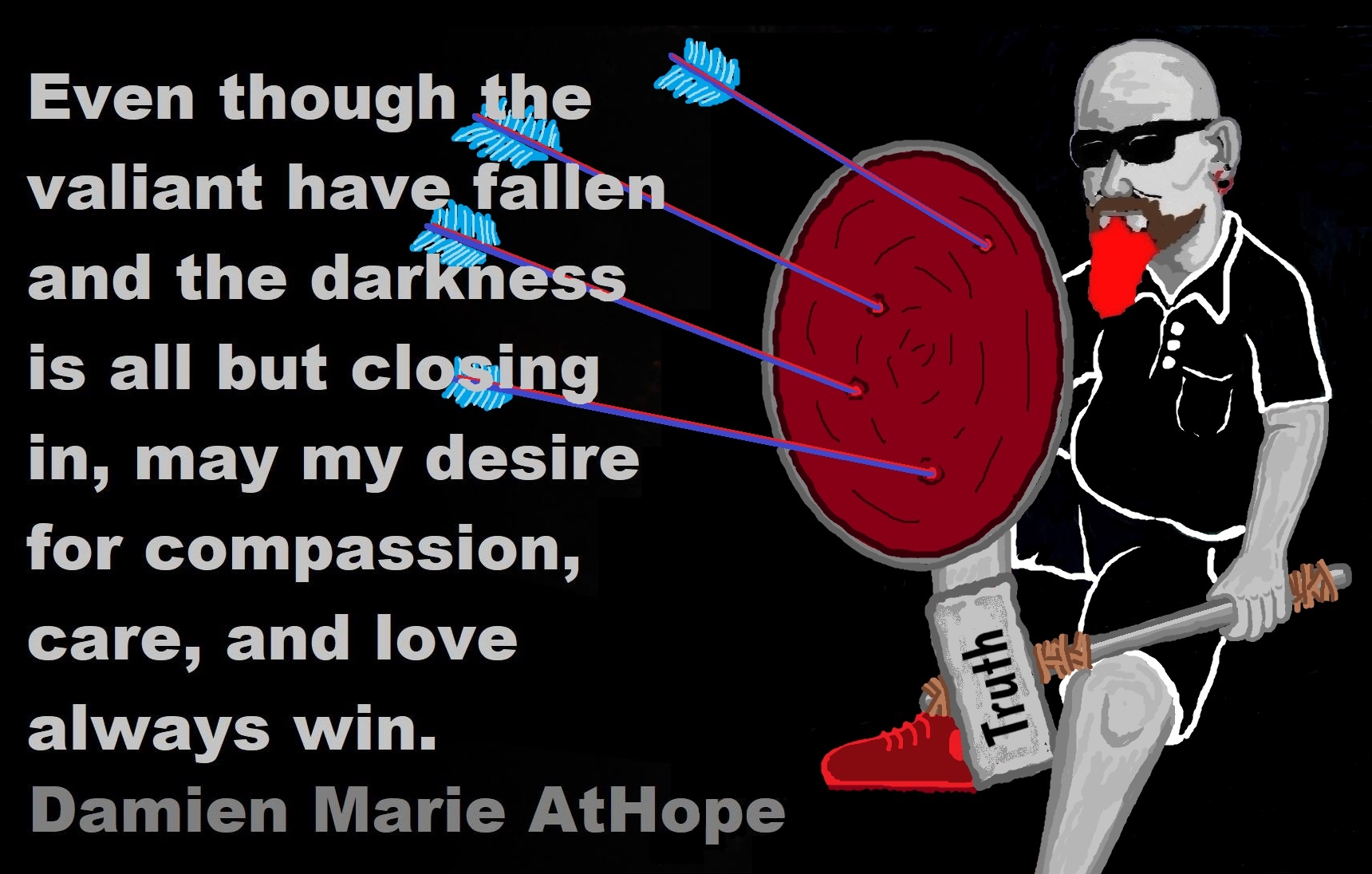
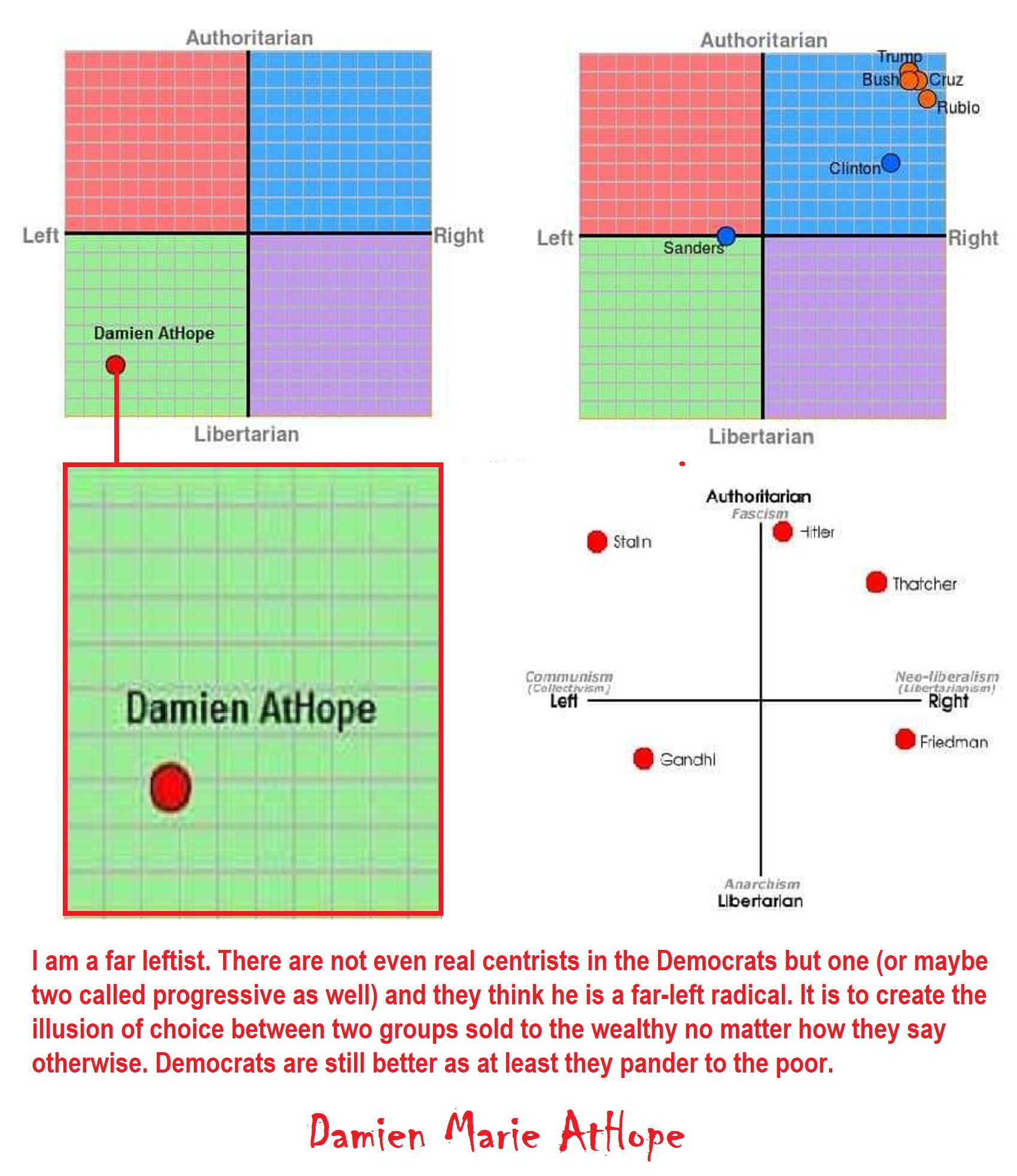

We rise by helping each other. I am a socialist anarchist and I welcome all good humans.
The Racist History of US immigration policy
“Banning an entire racial or ethnic group from entering the US isn’t new, and the data shows it. Immigrants and their descendants largely make up today’s US population. European immigrants were the first and largest group to arrive, and subsequent policies made it much easier for people from European countries to come to the US. That said, a decent numbers of Canadian and Chinese immigrants also arrived early in this country’s history, and over the years, different policies allowed greater numbers of Hispanics and Asians to immigrate.” ref
“Immigration in America has changed in the last 200 years. The idea of banning an entire racial or ethnic group from entering the US isn’t a new proposal. Donald Trump is far from the first person to propose it. In fact, this country has a long history of picking and choosing whom it lets into its borders — and whom it doesn’t. And this week two Republican Senators, alongside Trump, introduced a bill that would cut the number of legal immigrants entering the US in half by 2017. One of the senators, David Perdue of Georgia, says this is about “restoring legal immigration levels to their historical norms.” So what do historical trends look like? The interactive above provides an overview, which shows several periods in which the US implemented racist immigration policies.” ref
“In 1790, the US banned nonwhite people from naturalizing as citizens. In 1798, the US authorized the president to detain or deport noncitizens who were considered “dangerous to the peace and safety” of the country. Fast forward 80 years, and the US started banning all Chinese laborers from immigrating to the country. Tilted quota systems and systematically biased policies shaped the kind of people who could come the country. It wasn’t until the past 60 years — when racial quotas were repealed — that immigrant demographics showed any semblance of diversity. The graphic above shows how these policies affect who enters the country. It shows 200 years of legal immigration into the United States — and how different policies and international dynamics affect the patterns of who gets let in. Migration into the United States has ebbed and flowed in tandem with who policymakers believe ought to be allowed refuge and who doesn’t qualify. And we’re back again to talking about restricting entire immigrant groups from coming to the US. But we ought to do it with some idea of how this country has done so before.” ref
200 years of immigration also show how today’s population came to be
“But this isn’t just a story about immigration. It also shows how today’s US population came to be because the US implemented racist immigration policies. In 1820, where the graphic starts, there were only about 9.7 million people in the United States, which is about the current population of Sweden. So as the graphic shows 80 million people flowing in from other countries over the past 200 years, it also shows the making of the US as we know it today. (Note: A reader pointed out that country-by-country data before 1910 is notoriously unreliable, although general trends hold true.) It is these people, and their descendants, who largely make up today’s US population. European immigrants were the first and largest group to arrive, and there were subsequent policies that made it much easier for people from those countries to come to the US. That said, a decent numbers of Canadian and Chinese immigrants also arrived early in this country’s history, and over the years, different policies allowed greater numbers of Hispanics and Asians to immigrate. At the end of the graphic, you can see how colorful the bars get, which is partially the reason why demographers predict the majority of the US will be minorities by the year 2044.” ref
The Anarchist Exclusion Act of 19o3
“The Immigration Act of 1903, also called the Anarchist Exclusion Act, of the United States regulating immigration. It codified previous immigration law and added four inadmissible classes: anarchists, people with epilepsy, beggars, and importers of prostitutes.” ref
Alien Anarchists Exclusion Act of 1918
“The United States Immigration Act of 1918, excluded and expelled from the United States aliens who are members of the anarchistic and similar classes. Department of Justice were frustrated in their attempts to suppress anarchist activity by their inability to gain convictions of even self-professed anarchists under current legislation.” ref
Global Anti-Anarchism: The Origins of ideological Deportation and the Suppression of Expression
“On September 6, 1901, a self-proclaimed anarchist named Leon Czolgosz fatally shot President William McKinley at the Pan-American Exposition in Buffalo, New York. This paper places the suppression of anarchists and the exclusion and deportation of foreigners in the aftermath of the “shot that shocked the world” within the context of international anti-anarchist efforts, and reveals that President McKinley’s assassination successfully pulled the United States into an existing global conversation over how to combat anarchist violence. This paper argues that these anti-anarchist restrictions and the suppression of expression led to the emergence of a “free speech consciousness” among anarchists, and others, and to the formation of the Free Speech League, a predecessor of the American Civil Liberties Union (ACLU). Challenging governmental suppression transformed anarchists’ identities from violent criminals to free speech defenders. This paper also explores the history, passage, and implementation of the Alien Immigration Act of 1903, which barred and expelled anarchists, those associated with anarchists, and those advocating anarchism, and became the first federal law authorizing the exclusion or deportation of foreigners based on their ideological beliefs, associations, and/or expressions. In the United States ex rel. Turner v. Williams (1904), the Supreme Court affirmed the deportation of British philosophical anarchist John Turner and upheld the Alien Act’s constitutionality, establishing the precedent for future ideological restrictions of foreigners. This legal precedent paved the way for the mass deportations of radicals after the 1919 Palmer Raids, the exclusion of alleged communist writers, actors, and professors under the McCarran Act of 1950 and the McCarran-Walter Act of 1952, and eventually for a visa denial barring entry to an Islamic scholar under the Patriot Act of 2001.” ref
Immigration Act excludes anarchists; deportation causes controversy
“Congress adopted the Immigration Act of 1903, which excluded immigrants who were “anarchists, or persons who believe in or advocate the overthrow by force or violence of all governments, or of all forms of law, or the assassination of public officials” (Ibid.: 792). This law generated considerable controversy when the federal government attempted to deport John Turner, a British trade unionist found to possess a copy of a pamphlet by Johann Most. Attorney Clarence Darrow, among others, stepped forward to help the newly formed Free Speech League — a precursor to the American Civil Liberties Union — press the free speech aspects of the case. The Supreme Court rejected the appeal against deportation in United States ex. rel. John Turner v. Williams (1904).” ref
Bad tendency test used to uphold anarchy conviction
“In Gitlow, the Court upheld a conviction of socialists under New York’s criminal anarchy law, which the state had adopted in 1902. (New Jersey and Wisconsin had adopted similar legislation.) Although the Court used the decision to indicate that it would now apply First Amendment free speech rights to the states, the majority applied the bad tendency test, which allowed for the prosecution of speech that had a “bad tendency” to promote illegal action. They used the test to uphold the conviction not of an anarchist but of a socialist for distributing copies of the Left-wing Manifesto advocating the overthrow of the government by force. Over time, including in Brandenburg v. Ohio (1969), which struck down an Ohio criminal syndicalism act, the Court would make clearer distinctions between the legal advocacy of abstract doctrine (protected speech) and incitement to imminent lawless action (unprotected by the First Amendment). John Vileis professor of political science and dean of the Honors College at Middle Tennessee State University. He is co-editor of the Encyclopedia of the First Amendment. This article was originally published in 2009.” ref
How U.S. Immigration Laws and Rules have Changed through History
“The United States began regulating immigration soon after it won independence from Great Britain, and the laws since enacted have reflected the politics and migrant flows of the times. Early legislation tended to impose limits that favored Europeans, but a sweeping 1965 law opened doors to immigrants from other parts of the world. In more recent years, laws and presidential actions have been shaped by concerns about refugees, unauthorized immigration, and terrorism.” ref
1790 NATURALIZATION ACT
“Excluded non-white people from eligibility to naturalize. Naturalization requirements included two years of residence in the country and “good moral character,” and an applicant must be a “free white person.” The Naturalization Act of 1795 extended the residency requirement to five years. In 1798, this was extended to 14 years, then back to five in 1802.” ref
“Starting in 1875, a series of restrictions on immigration were enacted. They included bans on criminals, people with contagious diseases, polygamists, anarchists, beggars and importers of prostitutes. Other restrictions targeted the rising number of Asian immigrants, first limiting migration from China and later banning immigration from most Asian countries. By the early 1900s, the nation’s predominant immigration flow shifted away from northern and western European nations and toward southern and eastern Europe. In response, laws were passed in 1921 and 1924 to try to restore earlier immigration patterns by capping total annual immigration and imposing numerical quotas based on immigrant nationality that favored northern and western European countries.” ref
“Long-standing immigration restrictions began to crumble in 1943, when a law allowed a limited number of Chinese to immigrate. In 1952, legislation allowed a limited number of visas for other Asians, and race was formally removed as grounds for exclusion. Although a presidential commission recommended scrapping the national-origins quota system, Congress did not go along. In 1965, though, a combination of political, social and geopolitical factors led to passage of the landmark Immigration and Nationality Act that created a new system favoring family reunification and skilled immigrants, rather than country quotas. The law also imposed the first limits on immigration from the Western Hemisphere. Before then, Latin Americans had been allowed to enter the U.S. without many restrictions. Since enactment of the 1965 Immigration and Nationality Act, immigration has been dominated by people born in Asia and Latin America, rather than Europe.” ref
“Several laws since then have focused on refugees, paving the way for the entrance of Indochinese refugees fleeing war violence in the 1970s and later including relief for other nationalities, including Chinese, Nicaraguans, and Haitians. A 1990 law created the “temporary protective status” that has shielded immigrants, mainly Central Americans, from deportation to countries facing natural disasters, armed conflicts, or other extraordinary conditions. In 1986, Congress enacted another major law – the Immigration Reform and Control Act – that granted legalization to millions of unauthorized immigrants, mainly from Latin America, who met certain conditions. The law also imposed sanctions on employers who hired unauthorized immigrants. Subsequent laws in 1996, 2002, and 2006 were responses to concerns about terrorism and unauthorized immigration. These measures emphasized border control, prioritized enforcement of laws on hiring immigrants, and tightened admissions eligibility.” ref
“The most recent changes in immigration policy have been an exception to that pattern. In 2012, President Obama took executive action to allow young adults who had been brought to the country illegally to apply for deportation relief and a work permit. In 2014, he expanded that program (known as Deferred Action for Childhood Arrivals, or DACA) and set up a new program to offer similar benefits to some unauthorized-immigrant parents of U.S.-born children. The DACA expansion and the new program (Deferred Action for Parents of Americans and Lawful Permanent Residents, or DAPA) are on hold because of a legal challenge by 26 states.” ref
Courts are Beginning to Admit that Some Immigration Laws are Racist
“A federal judge in Nevada ruled for the first time last week that a longstanding law that makes it a felony to reenter the United States after deportation is unconstitutional because it’s explicitly racist in its origins. Federal laws make it a misdemeanor to enter the country without permission and a felony to reenter, punishable by up to six months in prison for entry and up to 20 years for reentry. Today, illegal entry and reentry are the most prosecuted crimes in federal courts, according to federal caseload statistics from the Administrative Office of the U.S. Courts from 2008-2019. Judge Miranda Du of the U.S. District Court for the District of Nevada dismissed on Aug. 18 a case against Gustavo Carrillo-Lopez, who was indicted for being in the U.S. after previously being deported. Du held that Carrillo-Lopez had shown that the reentry law was “enacted with a discriminatory purpose and that the law has a disparate impact on Latinx persons.” The government failed to show it “would have been enacted absent racial animus.” ref
“The ruling is a momentous judicial acknowledgment of the plainly racist and nativist underpinnings of laws, like the Immigration and Nationality Act of 1952, that criminalize reentry. It marks a rare admission by the courts that foundational elements of the federal immigration machinery – enforcement processes we now take for granted – actually clash with constitutional equal protection guarantees, and perpetuate a stigmatizing disparate impact on Latinos and Hispanic people. It’s also a recognition that courts can and should strike down laws motivated by bias, especially given the prevalence of approaches to law enforcement that are inextricably linked to race and identity, like drug-crime sentencing. Judge Michael Simon of the U.S. District Court for the District of Oregon said in a ruling earlier this month that he was “unaware of any federal appellate decision holding that a facially neutral act passed by Congress was motivated by racial, ethnic or religious animus.” ref
“The U.S. prosecutors office in Nevada didn’t respond to my request for comment and my question about a potential appeal. Ahilan Arulanantham, professor and co-director of the Center for Immigration Law and Policy at the University of California, Los Angeles School of Law, told me the ruling is significant culturally because it airs out “incredible archival and legislative history of these laws, which is really very sordid and just racist.” The U.S. has criminalized border crossing for more than 90 years, and the administrations of Presidents George W. Bush, Barack Obama, and Donald Trump all ratcheted up the deportation and prosecution of immigrants for entering or reentering the country illegally. But the historical record shows – quite clearly – that the criminalization of unauthorized entry and reentry rests on fundamentally racist foundations.” ref
“That history was laid out in Carrillo-Lopez’s case by UCLA historian Kelly Lytle Hernandez and Benjamin Gonzalez O’Brien, a political scientist at San Diego State University. The Aug. 3 ruling by Judge Simon in the District of Oregon also acknowledged that history, and suggested Congress should explicitly repudiate the racism underlying immigration laws. Government lawyers in Carrillo-Lopez’s case too “conceded that discriminatory intent motivated the passage” of some immigration laws, Du wrote. I asked Gonzalez O’Brien whether it’s fair to say that it’s generally accepted among historians and political scientists that U.S. immigration laws of today have racist underpinnings. “Yeah, because if you look at that history in this country, it’s fundamentally impossible to separate race and racism from immigration policing,” Gonzalez O’Brien said. “The desire to shape the racial and cultural characteristics of this country is deeply intertwined with our immigration policy.” ref
“That racialized conception goes almost as far back as U.S. immigration law itself, which has constructed and redefined “whiteness” over centuries, as PBS reported in September 2017. The Page Act of 1875 and the Chinese Exclusion Act of 1882 effectively banned Chinese immigration. The National Origins Act of 1924 used a racial quota system consciously designed to discourage southern and eastern Europeans from entering the U.S. It was praised by Adolf Hitler, according to the PBS report. Unlawful reentry was first criminalized in 1929, as part of the inauspiciously titled Undesirable Aliens Act. It was this statute that prosecutors conceded was motivated by racial animus. At the time, Congress openly relied on the discredited pseudoscience of eugenics to enact immigration laws.” ref
“The Immigration and Nationality Act of 1952 incorporated the language and policy of the 1929 statute’s reentry bar. But prosecutors argued that the INA is different because there aren’t statements in the Congressional record showing lawmakers’ racist intentions. In other words, that the policy became free of the taint of racism because elected representatives weren’t making bigoted remarks on the Senate and House floor as they re-enacted it. But Congress didn’t repudiate the racial animus of 1929 in 1952, although it knew the law disparately impacted Latinos (Mexicans comprised 99% of offenders in some years, Lytle Hernandez testified). Instead, lawmakers expanded government power to criminalize unlawful reentry, and did so per the recommendations of a deputy attorney general who used a racist slur in his letter of support for the law, Du wrote.” ref
“In fact, the same Congress had enacted an “anti-harboring” measure that lawmakers openly referred to as the “wetback bill” just months before. Those policies were a compromise between agribusiness leaders who wanted undocumented immigrants for cheap, exploitable labor, and nativists in Congress who wanted to keep America white, according to the academics who testified. The statute criminalized workers and those who help people cross the border, but included a specific exemption for employers. Enforcement targeted Latinos even though Canadians were also entering the U.S. in record numbers then, Du wrote. Du’s opinion is a rare court ruling laying out the strong factual, moral and Constitutional grounds for striking down some current laws because of their original racist intent. Still, the likelihood that this particular ruling will be appealed means the case may end up as an exemplar of how systemic racism operates.” ref
“Here, the people who held racist personal beliefs – lawmakers in 1929 – are dead and gone. But their racist policies have been continued and expanded by the government under both political parties, none more so than the administration of the first non-white president. And now, under a president who has spoken more strongly about righting the racist wrongs of our past than any before, the government will (more than likely) again defend the reenactment of policies it admitted, per the ruling, were racist in their conception. More than anything else, that speaks to the necessity for the judiciary to follow Judge Du’s lead. Carrillo-Lopez’s public defender, Lauren Gorman, told me she’s “overjoyed for Mr. Carrillo-Lopez and his family.” “Though the racism and nativism embedded in the law’s historical record is blatant, it has taken nearly 100 years for a court to probe its outrageous history and assail the law’s constitutionality,” Gorman said. “The Court’s decision is a landmark ruling but one our Constitution demands.” ref
Mainstreaming Hate: The Anti-Immigrant Movement in the U.S.
“Anti-immigrant fervor, once relegated to more extreme quarters, has been increasingly mainstreamed over the last ten years. Over the last two years, with the advent of a new administration focused on much stricter immigration policies and complementary executive actions, anti-immigrant and anti-refugee sentiment has made life substantially more difficult for all immigrants. Anti-immigrant groups like FAIR (Federation for Immigration Reform) and CIS (Center for Immigration Studies) have successfully moved the Overton Window – or the boundaries of what’s considered acceptable within political action and public discourse.” ref
“These groups’ ideologies have been brought into the mainstream by policymakers who appear to agree with their rhetoric, and who have sought to institute harsh anti-immigrant laws nationwide. The Trump administration includes senior officials such as now former Attorney General Jeff Sessions and Stephen Miller, a senior advisor for policy, who are known for promoting hardline anti-immigrant policies. The Trump administration has also hired people with close ties to well-known anti-immigrant groups like FAIR and CIS throughout the executive branch.” ref
“President Trump has referred to immigrants and refugees as “an invasion” and used language to stoke fears about immigrants, telling the crowd at an October 22 rally in Texas, “They (immigrants) carve you up with a knife.” Anti-immigrant groups and activists use social media to demonize immigrants and get their messages across to the public. Anti-immigrant groups’ bigotry has also been normalized by the media, which provides a context- free platform for anti-immigrant spokespeople and their talking points. While white supremacist groups remain on the fringes of society, they share certain beliefs and rhetoric with anti-immigrant groups, and often feed off of the anti-immigrant beliefs of groups like FAIR and CIS.” ref
Dealing with the zero-tolerance immigration policy: SEAK out compassionate people.
What you need to know about the Trump administration’s zero-tolerance
Trump’s ‘zero tolerance’ immigration policy sparks outrage in Central America
What the Bible Really Says About Trump’s Zero-Tolerance Immigration
The Last ‘Zero Tolerance’ Border Policy Didn’t Work
“Ah, my friend Damien… feeling like a freak tonight because I seek out compassionate people such as yourself. Found out today that someone I thought was compassionate, isn’t. I was talking to her about the zero-tolerance policy about immigration and the families who are suffering. Her response was “it’s the parent’s fault because they were breaking the law. I was stunned and you were the first friend I have shared this with… How would you handle this?” – Questioner
My response, Feel for them and you. I always turn it to the VALUE (axiology), as it is the value that matters. I would say thinking about the value of humanity. I may simply express my Value for humanity and why all people on Earth are equal humans and thus there is an ethical (value conclusion/standards: axiology) mandate to act with humanity with all humanity. Everyone Loves Ethics: Link
My response, Value-blindness Gives Rise to Sociopathic evil: Link
How Do I Gain a Morality Persuasion or Make a Change to it?: Link


“America is a nation of immigrants. Immigrants are fundamental to America’s existence, its economic growth, diversity, and success. As a country built on immigration and Emma Lazarus’s call to the world’s “tired and poor,” the United States has also been a harbor for refugees and asylum seekers. Yet, America has also suffered from waves of nativism. This anti-immigrant fervor, once relegated to more extreme quarters, has been increasingly mainstreamed over the last ten years. During the last two years, in particular, an Administration that demonizes immigrants and those seeking refuge and focuses on hardline immigration policies and executive actions, has galvanized the anti-immigrant movement and made life substantially more difficult for all immigrants and the communities that welcome them.” ref
“Anti-immigrant ideology has gained mainstream acceptance, infiltrated policy implementation, been used as a wedge issue to scare constituents, and become the fodder of media personalities who regularly demonize immigrants to a wide audience. They frame their messages as reasonable and valid but are promoting xenophobia and preventing a reasonable conversation about real reform to address real challenges in the immigration system. They are also elevating the anxiety about immigration across the country. Almost a quarter of Americans surveyed in a July 2018 Gallup poll say immigration is the country’s top problem—and this number is higher than at any other point since Gallup began asking about the nation’s most important problem 17 years ago.” ref
“While the majority of the extreme anti-immigrant sentiment in the U.S. emanates from fringe groups like white supremacists and other nativists, there are a number of well-established anti-immigrant groups such as Federation for American Immigration Reform (FAIR), Center for Immigration Studies (CIS), NumbersUSA and The Remembrance Project which have secured a foothold in mainstream politics, and their members play a major role in promoting divisive, dangerous rhetoric and views that demonize immigrants. A number of these groups have attempted to position themselves as legitimate advocates against “illegal immigration” while using stereotypes, conspiracy theories, and outright bigotry to disparage immigrants and hold them responsible for a number of societal ills. A decade ago, most of this bigotry was directed primarily at Latino immigrants, but today, Muslim and Haitian immigrants, among others, are also targeted.” ref
“In the last ten years, there has been a mainstreaming of these groups. Anti-immigrant groups have successfully moved the boundaries of what’s considered acceptable within political action and public discourse. They have influenced policy at the state and federal levels. Anti-immigrant groups and their spokespeople are frequently featured by mainstream media outlets, which promote their ideas to an ever-larger audience, including government officials. Staff members of these groups often testify before Congress, which also helps promulgate their views. In 2008, ADL published a report exposing the individuals and groups who were, at the time, taking the lead in shifting anti-immigrant rhetoric from the confines of hate groups into the mainstream.2 Much has happened since then. This new report updates ADL’s previous examination of the issue and captures how the mainstreaming of anti-immigrant rhetoric and the demonization of immigrants has rapidly accelerated in the intervening decade due to increasing acceptance of anti-immigrant ideas and policies and the promotion of anti-immigrant sentiment in public discourse, on some news shows and on social media.” ref
“This report surveys the trends that have shaped anti-immigrant groups since 2008 and examines the groups’ current impact on the immigration debate. The report provides an overview of the anti-immigrant movement in this country and describes anti-immigrant myths and conspiracies that fuel the anti-immigrant movement; the anti-immigrant groups that influence the current atmosphere, including anti-Muslim groups that focus on immigration; the impact of the 2016 presidential race and the subsequent role of the current Administration in mainstreaming anti-immigrant ideology through policies and rhetoric; the rise in hate crimes against vulnerable populations and in hateful rhetoric directed at immigrants; political candidates who promote anti-immigrant views; the role of media and social media in promulgating anti-immigrant beliefs; the part white supremacists play in spreading anti-immigrant hatred and, finally, offers recommendations for the government, media, and general public to stop the proliferation of anti-immigrant ideas and policies in this country.” ref
“The Biden administration is abandoning its principles – and its friends – in a doomed effort to placate extremist voices. The Biden administration’s condemnation of its Border Patrol Agents’ spectacularly racist whipping, with horse reins, of Haitians walking up the riverbank, while tripling down on the less spectacular but equally racist and illegal expulsions of Haitian asylum seekers under the pretext of fighting COVID-19, shows a troubling disconnect between the administration’s professed ideals and its practices. Even worse, the administration is abandoning its principles – and its friends – in a doomed effort to placate extremist voices. The expulsions use Title 42 of the US Code, which authorizes the Centers for Disease Control and Prevention (CDC) to control entry to the United States in order to protect against communicable diseases. Trump immigration adviser Stephen Miller developed the policy as part of his efforts to limit immigration through any available tool. Public health was a pretext; Miller first tried – unsuccessfully – to invoke Title 42 for mumps and the flu. COVID-19 provided the hook he needed.” ref
“The Biden administration knows that the Title 42 expulsions are illegal and do not fight COVID-19. When the Trump administration implemented the policy, then-Senator Kamala Harris co-sponsored a bill that concluded the expulsions “violate longstanding, congressionally mandated protections for asylum seekers” and “fail to protect public health.” Leading public health officials have consistently rejected Title 42 as a public health measure, from CDC scientists’ refusal to implement Miller’s plan last year, to the October 3 declaration by Dr Anthony Fauci – the president’s chief medical adviser – that Title 42 “is not the solution to an outbreak.” Leading legal and diplomatic officials agree. On September 22, Ambassador Daniel Foote resigned as US special envoy to Haiti, citing, among other reasons, the “inhumane, counterproductive decision to deport thousands of Haitians.” Department of State legal adviser Harold Koh – who has served in four administrations – left his post on October 2, calling Title 42 expulsions “illegal” and “inhumane.” ref
“The continued use of Title 42 is costing the administration political support, especially among the Black voters whose turnout made the Biden administration possible, and Black members of Congress and advocacy organizations. But the Biden administration is willing to pay this price, and to make the 7,500 Haitians expelled since the whipping pay, too – in order to cater to a constituency that will never vote for him, but has successfully blocked immigration reform for decades. Stephen Miller’s immigration policies came “almost verbatim” from organizations founded by John Tanton, a eugenicist and white supremacist, especially the Federation for American Immigration Reform (FAIR), NumbersUSA, and the Center for Immigration Studies (CIS). Tanton believed that “for European-American society and culture to persist, it requires a European-American majority and a clear one at that.” Tanton’s organizations do not use this overt white supremacist language, but their actions almost invariably support a white majority.” ref
“Stephen Miller is gone from the White House, but he and other Tanton legacy heirs still dominate our immigration discussions, as they have for more than two decades, preventing Republican congressional collaboration on immigration reform and waging what President Biden calls “our exhausting war over immigration.” When the Biden administration reportedly planned to end Title 42 expulsions in June, the Tanton network groups attacked, leading the administration to announce an indefinite extension of the policy. The Tanton heirs are currently generating hysteria about the southern border to derail popular, bipartisan bills on DREAMers and agricultural workers. The bills passed the House of Representatives, but Tanton group pressure prevented the 10 Republican votes needed to overcome a filibuster in the Senate. Senate Democrats tried to bypass the filibuster by including immigration reforms in the spending bill, but the Senate Parliamentarian Elizabeth MacDonough, a nonpartisan arbiter of the Senate’s rules, blocked it.” ref
“Democrats promise to find another way to include immigration provisions in the spending bill. But if they succeed they will produce only a narrow and temporary exception to the rule of the Tanton network’s grip on US immigration policy. The only way for political leaders of both parties to move forward with the immigration reforms that US voters want and its economy needs is to reject the influence of white supremacist organisations. Appeasing them simply does not work: immigration reform initiatives under Presidents Bill Clinton, George W Bush, and Barack Obama all included compromises to senators fearful of extremist attacks, but all were nevertheless torpedoed by Tanton groups. If images of white border guards on horseback whipping Haitians as they stumble out of the Rio Grande do not compel us to identify and eradicate white supremacist influence in our immigration policy, nothing will.” ref
“The Biden administration can lead in doing so by heeding the law more than it heeds the racists, and ending Title 42 expulsions. But the rest of us must step up, too. The media should properly identify white supremacists and white supremacist talking points, however well-disguised. Voters of both parties must have their representatives’ backs when they support common-sense immigration reform. All of us need to be open to discussing a broad range of opinions on immigration, but with zero tolerance for advocacy based explicitly or implicitly on white supremacy.” ref

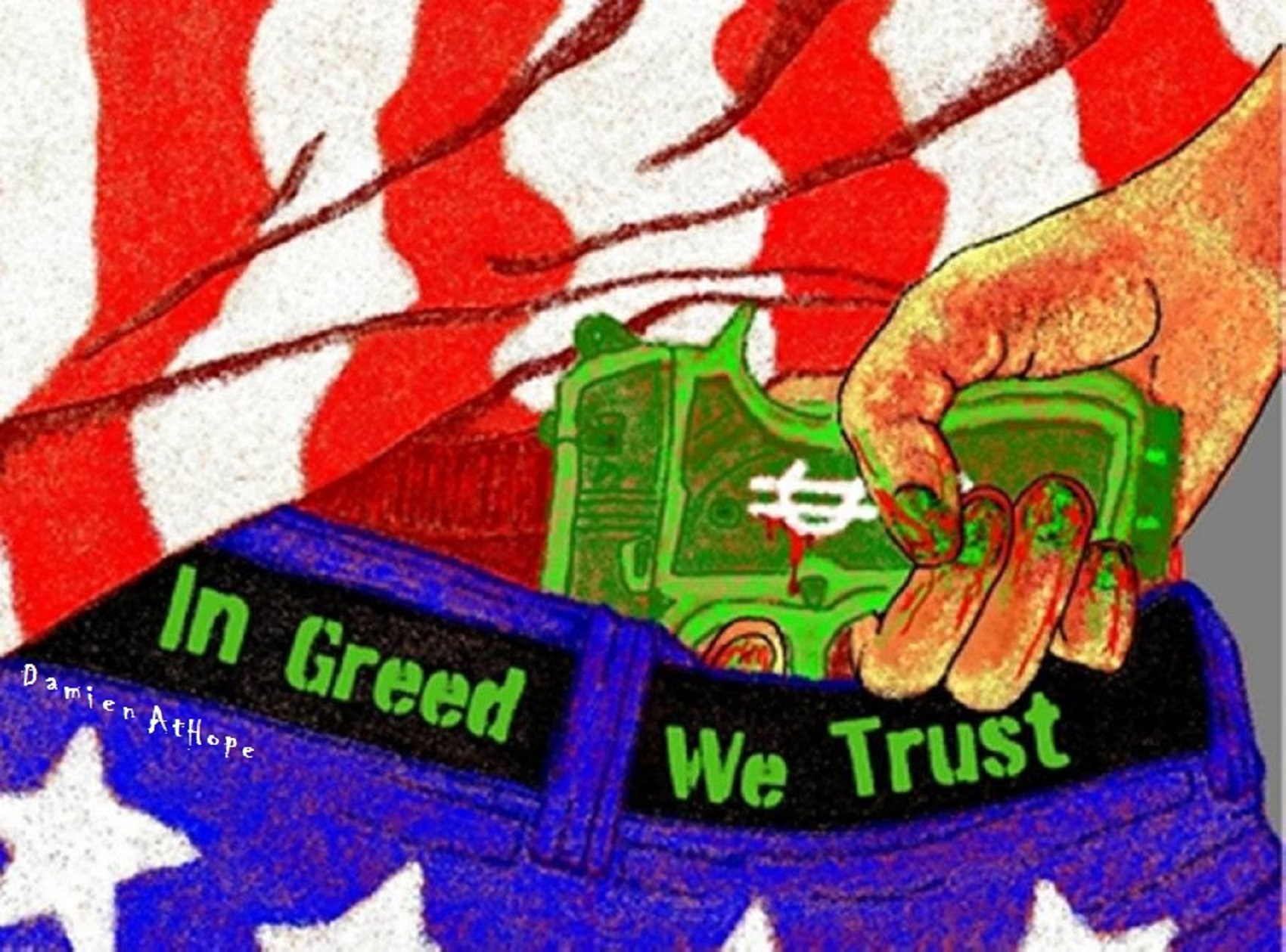



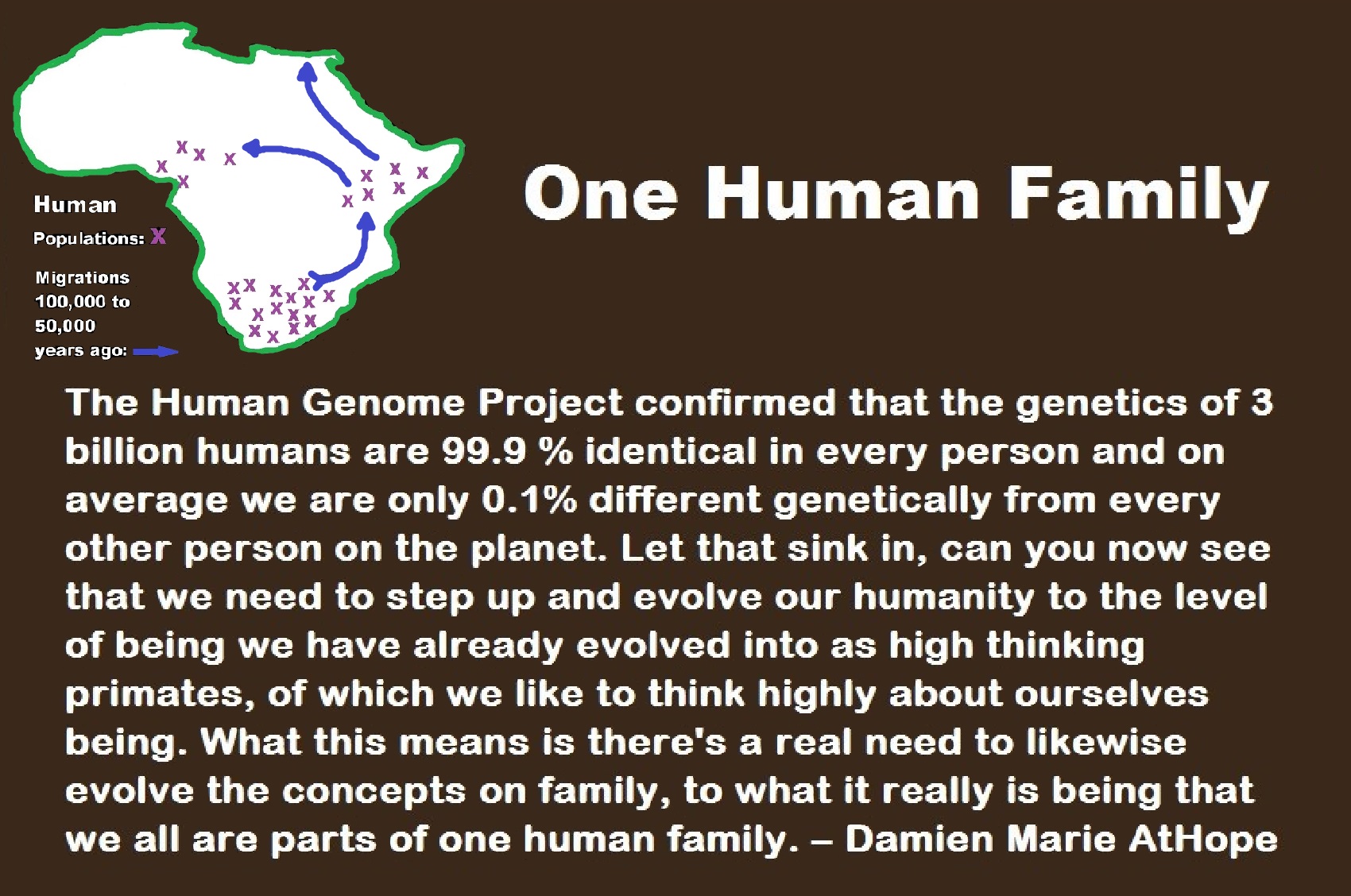
“When researchers completed the final analysis of the Human Genome Project in April 2003, they confirmed that the 3 billion base pairs of genetic letters in humans were 99.9 percent identical in every person. It also meant that individuals are, on average, 0.1 percent different genetically from every other person on the planet. And in that 0.1 percent lies the mystery of why some people are more susceptible to a particular illness or more likely to be healthy than their neighbor – or even another family member.” ref

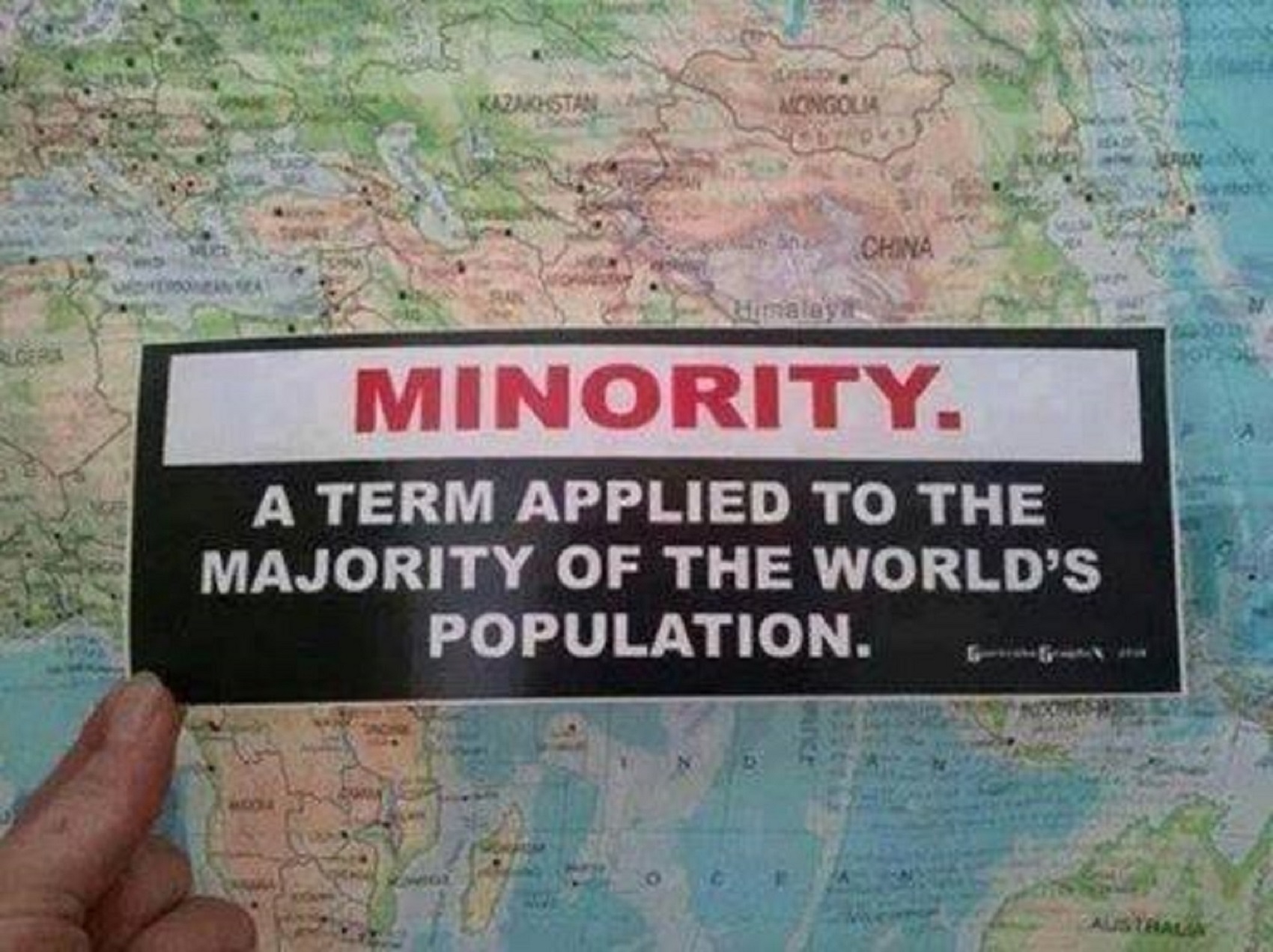
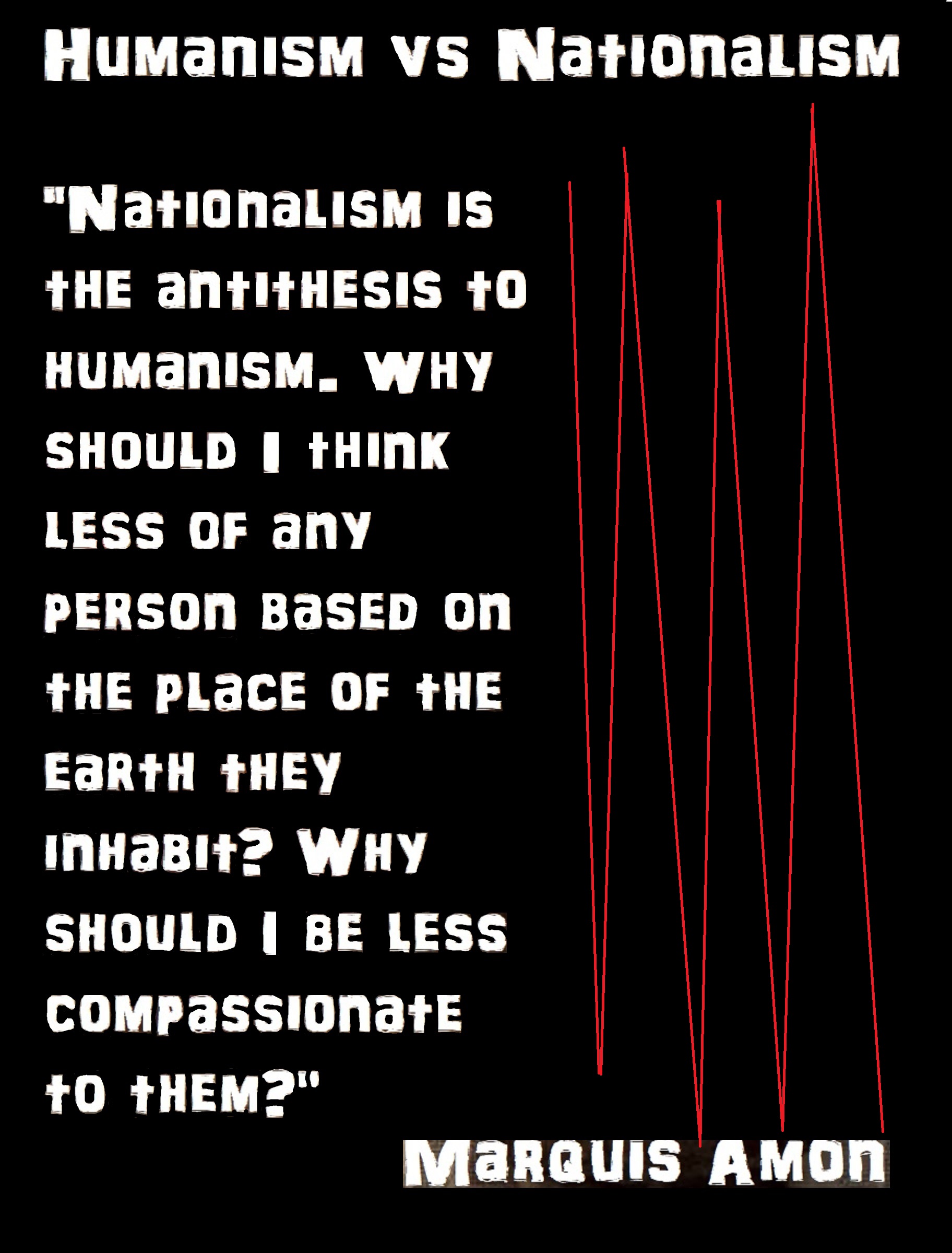





While hallucinogens are associated with shamanism, it is alcohol that is associated with paganism.
The Atheist-Humanist-Leftist Revolutionaries Shows in the prehistory series:
Show two: Pre-animism 300,000 years old and animism 100,000 years old: related to “Anarchism and Socialism”
Show tree: Totemism 50,000 years old: related to “Anarchism and Socialism”
Show four: Shamanism 30,000 years old: related to “Anarchism and Socialism”
Show five: Paganism 12,000 years old: related to “Anarchism and Socialism”
Show six: Emergence of hierarchy, sexism, slavery, and the new male god dominance: Paganism 7,000-5,000 years old: related to “Anarchism and Socialism” (Capitalism) (World War 0) Elite and their slaves!
Prehistory: related to “Anarchism and Socialism” the division of labor, power, rights, and recourses: VIDEO
Pre-animism 300,000 years old and animism 100,000 years old: related to “Anarchism and Socialism”: VIDEO
Totemism 50,000 years old: related to “Anarchism and Socialism”: VIDEO
Shamanism 30,000 years old: related to “Anarchism and Socialism”: VIDEO
Paganism 12,000 years old: related to “Anarchism and Socialism” (Pre-Capitalism): VIDEO
Paganism 7,000-5,000 years old: related to “Anarchism and Socialism” (Capitalism) (World War 0) Elite and their slaves: VIEDO
Paganism 5,000 years old: progressed organized religion and the state: related to “Anarchism and Socialism” (Kings and the Rise of the State): VIEDO
Paganism 4,000 years old: related to “Anarchism and Socialism” (First Moralistic gods, then the Origin time of Monotheism): VIEDO
I do not hate simply because I challenge and expose myths or lies any more than others being thought of as loving simply because of the protection and hiding from challenge their favored myths or lies.
The truth is best championed in the sunlight of challenge.
An archaeologist once said to me “Damien religion and culture are very different”
My response, So are you saying that was always that way, such as would you say Native Americans’ cultures are separate from their religions? And do you think it always was the way you believe?
I had said that religion was a cultural product. That is still how I see it and there are other archaeologists that think close to me as well. Gods too are the myths of cultures that did not understand science or the world around them, seeing magic/supernatural everywhere.
I personally think there is a goddess and not enough evidence to support a male god at Çatalhöyük but if there was both a male and female god and goddess then I know the kind of gods they were like Proto-Indo-European mythology.
This series idea was addressed in, Anarchist Teaching as Free Public Education or Free Education in the Public: VIDEO
Our 12 video series: Organized Oppression: Mesopotamian State Force and the Politics of power (9,000-4,000 years ago), is adapted from: The Complete and Concise History of the Sumerians and Early Bronze Age Mesopotamia (7000-2000 BC): https://www.youtube.com/watch?v=szFjxmY7jQA by “History with Cy“
Show #1: Mesopotamian State Force and the Politics of Power (Samarra, Halaf, Ubaid)
Show #2: Mesopotamian State Force and the Politics of Power
Show #3: Mesopotamian State Force and the Politics of Power (Uruk and the First Cities)
Show #4: Mesopotamian State Force and the Politics of Power (First Kings)
Show #5: Mesopotamian State Force and the Politics of Power (Early Dynastic Period)
Show #6: Mesopotamian State Force and the Politics of Power
Show #7: Mesopotamian State Force and the Politics of Power (Sargon and Akkadian Rule)
Show #9: Mesopotamian State Force and the Politics of Power (Gudea of Lagash and Utu-hegal)
Show #12: Mesopotamian State Force and the Politics of Power (Aftermath and Legacy of Sumer)

The “Atheist-Humanist-Leftist Revolutionaries”
Cory Johnston ☭ Ⓐ Atheist Leftist @Skepticallefty & I (Damien Marie AtHope) @AthopeMarie (my YouTube & related blog) are working jointly in atheist, antitheist, antireligionist, antifascist, anarchist, socialist, and humanist endeavors in our videos together, generally, every other Saturday.
Why Does Power Bring Responsibility?
Think, how often is it the powerless that start wars, oppress others, or commit genocide? So, I guess the question is to us all, to ask, how can power not carry responsibility in a humanity concept? I know I see the deep ethical responsibility that if there is power their must be a humanistic responsibility of ethical and empathic stewardship of that power. Will I be brave enough to be kind? Will I possess enough courage to be compassionate? Will my valor reach its height of empathy? I as everyone, earns our justified respect by our actions, that are good, ethical, just, protecting, and kind. Do I have enough self-respect to put my love for humanity’s flushing, over being brought down by some of its bad actors? May we all be the ones doing good actions in the world, to help human flourishing.
I create the world I want to live in, striving for flourishing. Which is not a place but a positive potential involvement and promotion; a life of humanist goal precision. To master oneself, also means mastering positive prosocial behaviors needed for human flourishing. I may have lost a god myth as an atheist, but I am happy to tell you, my friend, it is exactly because of that, leaving the mental terrorizer, god belief, that I truly regained my connected ethical as well as kind humanity.
Cory and I will talk about prehistory and theism, addressing the relevance to atheism, anarchism, and socialism.
At the same time as the rise of the male god, 7,000 years ago, there was also the very time there was the rise of violence, war, and clans to kingdoms, then empires, then states. It is all connected back to 7,000 years ago, and it moved across the world.
Cory Johnston: https://damienmarieathope.com/2021/04/cory-johnston-mind-of-a-skeptical-leftist/?v=32aec8db952d
The Mind of a Skeptical Leftist (YouTube)
Cory Johnston: Mind of a Skeptical Leftist @Skepticallefty
The Mind of a Skeptical Leftist By Cory Johnston: “Promoting critical thinking, social justice, and left-wing politics by covering current events and talking to a variety of people. Cory Johnston has been thoughtfully talking to people and attempting to promote critical thinking, social justice, and left-wing politics.” http://anchor.fm/skepticalleft
Cory needs our support. We rise by helping each other.
Cory Johnston ☭ Ⓐ @Skepticallefty Evidence-based atheist leftist (he/him) Producer, host, and co-host of 4 podcasts @skeptarchy @skpoliticspod and @AthopeMarie
Damien Marie AtHope (“At Hope”) Axiological Atheist, Anti-theist, Anti-religionist, Secular Humanist. Rationalist, Writer, Artist, Poet, Philosopher, Advocate, Activist, Psychology, and Armchair Archaeology/Anthropology/Historian.
Damien is interested in: Freedom, Liberty, Justice, Equality, Ethics, Humanism, Science, Atheism, Antiteism, Antireligionism, Ignosticism, Left-Libertarianism, Anarchism, Socialism, Mutualism, Axiology, Metaphysics, LGBTQI, Philosophy, Advocacy, Activism, Mental Health, Psychology, Archaeology, Social Work, Sexual Rights, Marriage Rights, Woman’s Rights, Gender Rights, Child Rights, Secular Rights, Race Equality, Ageism/Disability Equality, Etc. And a far-leftist, “Anarcho-Humanist.”
I am not a good fit in the atheist movement that is mostly pro-capitalist, I am anti-capitalist. Mostly pro-skeptic, I am a rationalist not valuing skepticism. Mostly pro-agnostic, I am anti-agnostic. Mostly limited to anti-Abrahamic religions, I am an anti-religionist.
To me, the “male god” seems to have either emerged or become prominent around 7,000 years ago, whereas the now favored monotheism “male god” is more like 4,000 years ago or so. To me, the “female goddess” seems to have either emerged or become prominent around 11,000-10,000 years ago or so, losing the majority of its once prominence around 2,000 years ago due largely to the now favored monotheism “male god” that grow in prominence after 4,000 years ago or so.
My Thought on the Evolution of Gods?
Animal protector deities from old totems/spirit animal beliefs come first to me, 13,000/12,000 years ago, then women as deities 11,000/10,000 years ago, then male gods around 7,000/8,000 years ago. Moralistic gods around 5,000/4,000 years ago, and monotheistic gods around 4,000/3,000 years ago.


Damien Marie AtHope (Said as “At” “Hope”)/(Autodidact Polymath but not good at math):
Axiological Atheist, Anti-theist, Anti-religionist, Secular Humanist, Rationalist, Writer, Artist, Jeweler, Poet, “autodidact” Philosopher, schooled in Psychology, and “autodidact” Armchair Archaeology/Anthropology/Pre-Historian (Knowledgeable in the range of: 1 million to 5,000/4,000 years ago). I am an anarchist socialist politically. Reasons for or Types of Atheism
My Website, My Blog, & Short-writing or Quotes, My YouTube, Twitter: @AthopeMarie, and My Email: damien.marie.athope@gmail.com

